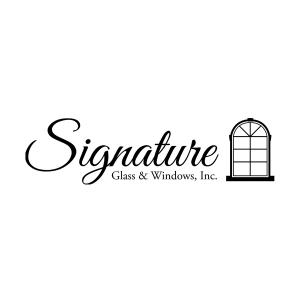Signature Glass and Windows, Inc. Responds to Salinas Demand for Energy-Efficient Window Solutions
Local window contractor addresses growing interest in affordable, energy-efficient windows across Salinas and Monterey County.
The push for energy-efficient windows in Salinas comes amid growing awareness of energy conservation and the need for sustainable building practices. With fluctuating utility costs and California’s Title 24 energy standards, Salinas property owners are turning to modern window technologies that offer better insulation, UV protection, and long-term cost savings.
“Energy efficiency isn’t just a trend—it’s becoming the new standard for homes and buildings in our region,” said Steve Stewart, President of Signature Glass and Windows, Inc. “We’re making sure our Salinas clients have access to reliable, affordable window solutions that meet both their aesthetic and environmental needs.”
Key Developments and Services:
· Low-E and Dual-Pane Windows: Designed to minimize heat transfer and reduce energy use year-round
· Retrofit Window Installation: For updating existing homes without extensive structural changes
· New Construction Window Packages: Tailored to builders and contractors working on residential projects
· Custom Glass Options: Including tempered and insulated glass for specific needs and applications
With over two decades of experience in the Central Coast region, Signature Glass and Windows, Inc. has established itself as a reliable partner for general contractors, architects, and homeowners. The company’s installation team is trained to follow current codes and best practices, ensuring efficiency and compliance.
Recent data from the U.S. Department of Energy indicates that heat gain and loss through windows are responsible for 25–30% of residential heating and cooling energy use. By upgrading to energy-efficient windows, Salinas homeowners can see measurable improvements in comfort and monthly utility expenses.
“We’re seeing more families and builders in Salinas make the switch to energy-conscious upgrades,” added Stewart. “It’s not just about saving on bills—it’s about creating homes that are better suited to California’s climate and environmental goals.”
The expansion of services also aligns with available financial incentives. Under the federal Inflation Reduction Act and California’s energy programs, homeowners may be eligible for rebates or tax credits when investing in qualifying energy-efficient windows.
For more information or to request a consultation, contact:
Signature Glass and Windows, Inc.
Communications Unlimited Inc. Expands Internet Services to Wynwood & Midtown Miami Area
ARGENTINA’S NEWEST BOY BAND SENSATION, ALMA, MAKES THEIR DEBUT WITH 'DÍMELO'
Jang-Hyun goes global with 1:1 online math platform K-Math Live, targeting to build an integrated education solution
Więcej ważnych informacji
 Jedynka Newserii
Jedynka Newserii

 Jedynka Newserii
Jedynka Newserii

Ochrona środowiska

Rozszerzenie UE wśród priorytetów duńskiej prezydencji. Akcesja nowych państw może mieć znaczenie dla bezpieczeństwa i gospodarki
Wraz z czerwcem kończy się druga polska prezydencja w Radzie Unii Europejskiej. W ciągu sześciu miesięcy instytucja ta pod przewodnictwem Polski podejmowała działania na rzecz bezpieczeństwa, w wielu wymiarach: zewnętrznym, wewnętrznym, informacyjnym, ekonomicznym, energetycznym, żywnościowym i zdrowotnym. Przede wszystkim doprowadziła do przełomowego wzrostu wydatków UE na obronność. Od 1 lipca pałeczkę przejmują Duńczycy, którzy zwrócą uwagę m.in. na obronę Bałtyku.
Transport
Ruszyła ważna inwestycja przemysłowa w województwie opolskim. Powstanie tu centrum logistyczne dla giganta motoryzacyjnego

Nowe regionalne Centrum Kompletacji i Dystrybucji, które powstanie w parku logistycznym i produkcyjnym Prologis Park Ujazd w województwie opolskim, będzie związane z rynkiem automotive aftermarket, konkretnie kompletacją i dystrybucją zestawów naprawczych dla branży motoryzacyjnej. Obiekt będzie służył firmie Schaeffler, a za jej budowę odpowiada Prologis. Jak podkreśla jego przedstawiciel, będzie to budynek niezależny od paliw kopalnych bezpośrednio dostarczanych do budynku i wyposażony w wiele rozwiązań prośrodowiskowych.
Konsument
Konsumenci rynku telekomunikacyjnego narzekają na nieprzejrzyste oferty. Jeden z operatorów chce je wyeliminować

Co piąty Polak dostrzega pozytywne zmiany na rynku usług telekomunikacyjnych, głównie jego rozwój, zarówno pod kątem liczby ofert, jak i rozwoju technologii. Gorzej jednak wypada przejrzystość ofert – wynika z badania Urzędu Komunikacji Elektronicznej. Konsumenci są zmęczeni skomplikowanymi taryfami i ukrytymi kosztami, dlatego coraz większym zainteresowaniem cieszą się proste pakiety. Dlatego też T-Mobile startuje z nową ofertą „Po prostu", z jednym, prostym abonamentem bez żadnych limitów.
Partner serwisu
Szkolenia

Akademia Newserii
Akademia Newserii to projekt, w ramach którego najlepsi polscy dziennikarze biznesowi, giełdowi oraz lifestylowi, a także szkoleniowcy z wieloletnim doświadczeniem dzielą się swoją wiedzą nt. pracy z mediami.








.gif)

 |
| |
| |
|